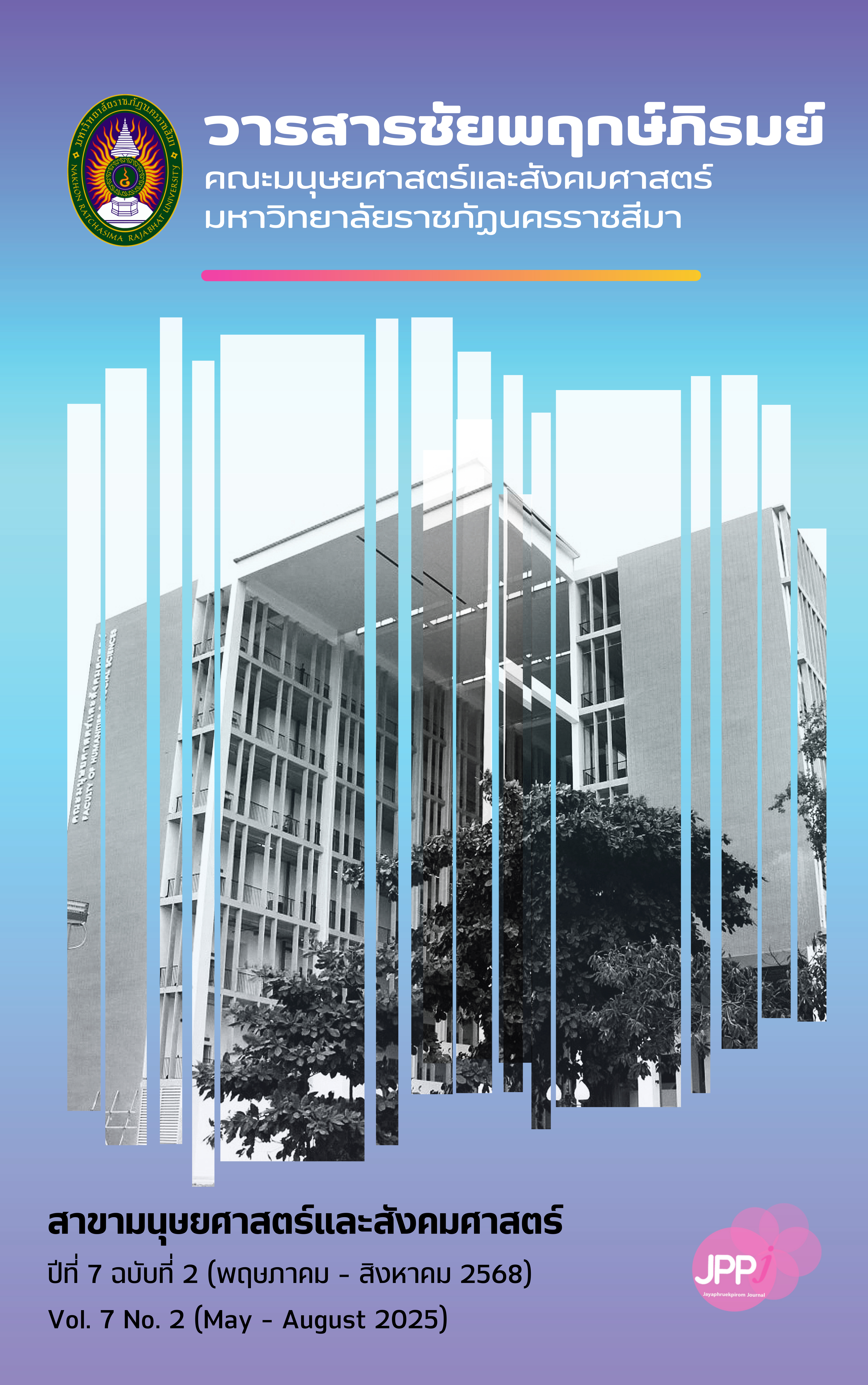RESEARCH ON CHINESE SOCIAL REFLECTIONS FROM MULAN POEM
Keywords:
Reflection, Mulan, Northern and Southern DynastiesAbstract
This research article aims to analyze the social reflections, lifestyles, and cultural aspects of ancient Chinese society as depicted in the Ballad of Mulan 《木兰辞》, a folk song composed during the Northern and Southern Dynasties period in China. The ballad, originating from the Xianbei (鲜卑) ethnic group, gained worldwide recognition through its portrayal of Mulan’s heroism. This study employs documentary research methodology, utilizing descriptive analysis and explanatory analysis to interpret the poem’s socio-cultural significance. The research findings reveal five key aspects: 1) Political Aspect – Reflecting a centralized governance system and the role of the king in decision-making, as well as the policies used in national administration. 2) Social Aspect – Reflecting a four-tier class structure. 3) Economic Aspect – Reflecting an economy that remained functional even during wartime. 4) Cultural Aspect – Reflecting the values of that era and the role of women in society. 5) Gender Equality Aspect – Reflecting the idea that women were capable of performing tasks on par with men, depending on individual abilities.
References
บุพงษ์ ภูศรี, ไพศาล เพ็งสวย, และนพรัตน์ กันทะพิกุล. (2567). บทบาทสตรีจีนในภาพยนตร์การ์ตูนเรื่อง “มู่หลาน”ของดิสนีย์. วารสารวิชาการมนุษยศาสตร์และสังคมศาสตร์ มหาวิทยาลัยราชภัฏนครปฐม, 15(1), น. 89-97.
Chen, S. (2010). A Heroine with Two Cultural Identities: The Ballad of Mulan V.S Its Cartoon Version. Journal of UESTC (Social Sciences Edition), 11(1), pp. 93-96.
Sinuraya, J. S. B., Azhar, A. A., & Sazali, H. (2021). Analysis of semiotics representation of feminism in the Mulan film 2020. International Journal of Cultural and Social Science, 6(1), pp. 92-105.
Wu Xiaoyi, Supawadi Yadi and Truong Thi Hang. (2024). ภาพแทนของสตรีจีนระบอบศักดินาในวรรณกรรมแปลเรื่อง 100 ยอดหญิงแห่งประวัติศาสตร์จีน. วารสารวิชาการภาษาและวัฒนธรรมจีน, 11(2), น. 539-561.
杜婕瑜. (2019). 迪士尼电影对《木兰辞》的文化接受与创造.智库时代 (25), pp. 165-167.
陈思宇. (2010). 两种文化背景下的女英雄——《木兰辞》与好莱坞卡通片《木兰》的对比研究. 电子科技大学学报(社科版), 12(01), pp. 93-96.
郭茂倩. (2016). 《乐府诗集》. 上海:上海古籍出版社.
龚羽盈. (2021). 论教育视野下魏晋时期女子自我意识的觉醒. 开封文化艺术职业学院学报,41(6), pp. 11-13.
李治安. (2019). 中近古“士农工商”较自由发展政策模式探研. 文史哲 (1), pp. 23-39+165.
李爽. (2020). 柔然与北魏的使者往来研究. 地域文化研究(05), pp. 116-123+156
刘人锋. (2022). 刘向《列女传》女性观的当代价值. 湖南人文科技学院学报(04),36-42.
梁晗清. (2023). 从地区考古视角探析魏晋南北朝时期的社会特点与城市遗址. 学术品读, (23), pp. 85-86.
罗晓莉. (2024). 魏晋南北朝乱离诗研究 (硕士学位论文).兰州:西北师范大学.
宋振. (1982). 《木兰辞》所反映的时代特征. 东北师大学报, (3), pp. 66-69.
邵纪万. (2009). 《魏晋南北朝史》. 北京:九州出版社.
邵春华. (2024). 《木兰辞》中的女性英雄主义与文化传承. 轻松语文, (7),pp.82-84.
赵艳亮. (2024). 河西魏晋十六国墓室壁画所见人物发式与发饰研究 (硕士学位论文).兰州:.西北师范大学.
张玉安. (2020). 六朝诗歌中所见女子面妆管窥. 艺术设计研究,(4), pp. 63-67.
张轶和贾宇. (2009). 《中国历史常识》(中泰对照) (第6版).北京:高等教育出版社.
郑朝琳. (2014). 结构主义叙事学视野下《木兰辞》中的木兰形象. 文学教育(上) (01), pp. 69-71.
魏存成. (2025). 高句丽的兴亡及其历史定位再探讨. 地域文化研究,(01),pp. 54-62.


